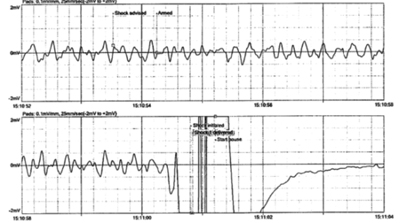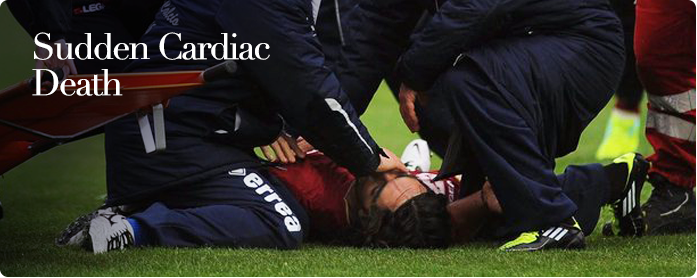| Sudden cardiac death implies that death occurred within 30 minutes of a collapse and was due to a cardiac cause. The cause is usually a fatal arrhythmia, either ventricular tachycardia (VT) or ventricular fibrillation (VF). |
|
| Figure 1 is a recording of VF from an automated external defibrillator (AED) taken from a cardiac arrest victim after collapse. An electrical shock was then delivered from the AED which then stopped the VF. Electrical shock is the most effective way of stopping VF. In public places like airports, sports stadiums and shopping centres, AEDs are placed so that members of the public may use them to save the lives of anyone who has suffered a cardiac arrest. |
|
 |
| FIGURE 1 |
|
| Figure 2 is another recording of a patient with VT who was successfully shocked to a normal rhythm using a manual defibrillator in the hospital. |
|
 |
| FIGURE 2 |
|
| PERSONS AT RISK FOR CARDIAC ARREST |
- Heart attack (acute myocardial infarct)
- Previous heart attack
- Cardiomyopathy
- Long QT Syndrome
- Short QT Syndrome
- Brugada Syndrome
- Heart failure
- Renal failure
- Survivors of previous cardiac arrest
|
|
| PREVENTION OF SUDDEN CARDIAC DEATH |
|
| Persons who have been identified to be at risk for sudden cardiac death (see above) should be implanted with an implantable cardioverter defibrillator (ICD). It is a device that automatically detects ventricular fibrillation and ventricular tachycardia and treats it by an electrical shock or pacing. |







